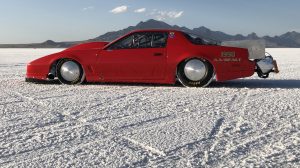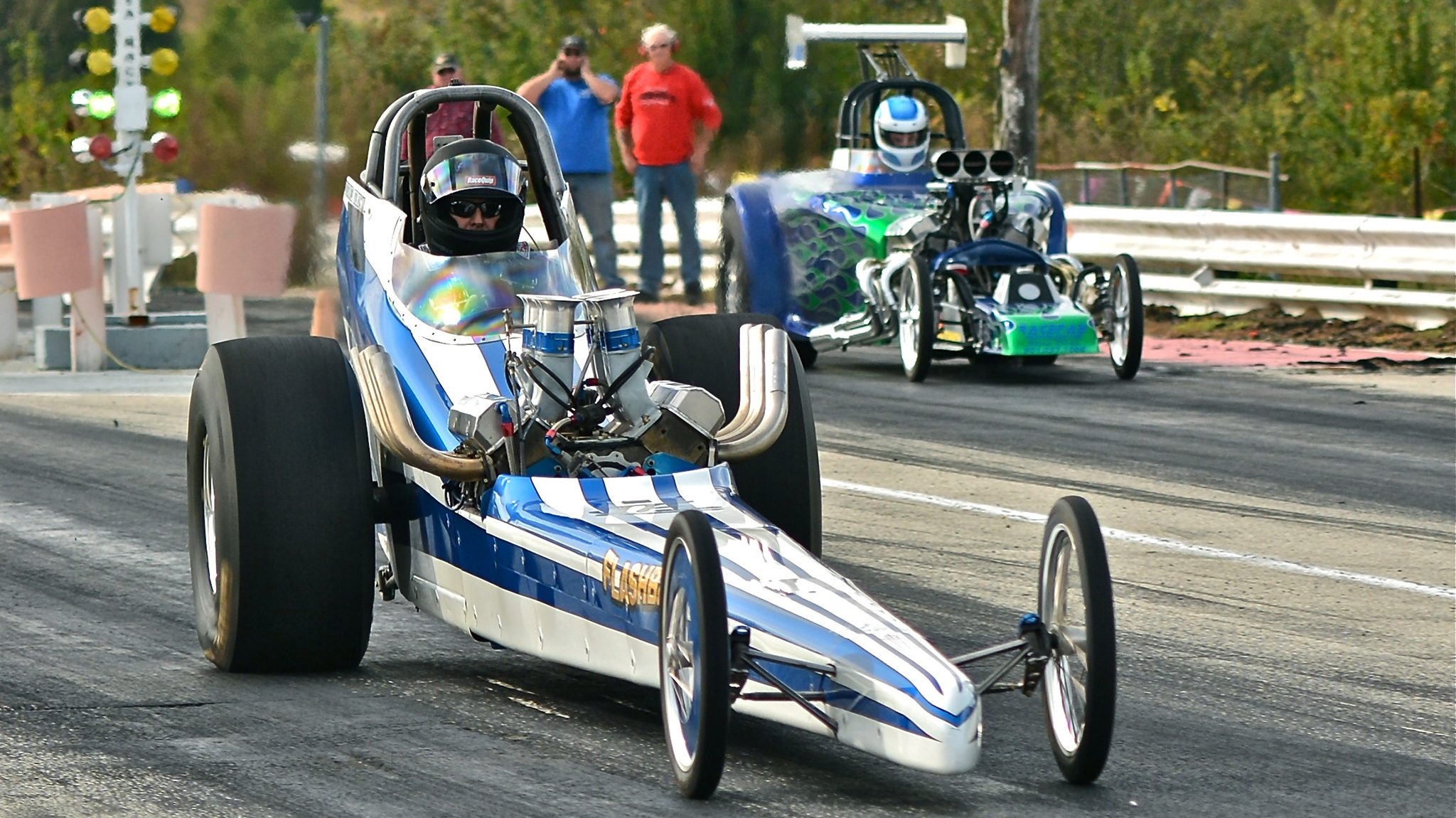With the assistance of Jeffrey Ferguson (BSME 12), the Buckwheat Racing Team set a land speed record of 300 mph at the 62nd Bonneville Salt Flats Speed Week in 2010. The team immediately set a goal to one day return and break another record. Last month, Ferguson, along with the team, did indeed return to Utah to chase a new record with “#project320mph,” the 1988 Pontiac Trans Am that he engineered and constructed.
Unfortunately, the 5,000-pound, 1,800 horsepower hot rod didn’t break the 300 mph barrier.
“It was due to poor salt conditions,” said Ferguson, an Olive Branch native who founded and operates JF Hot Rods in Byhalia. “I will be going back in 2020 to accomplish my goal.”
Building and racing hot rods is exciting, but the University of Mississippi mechanical engineering alumnus said it’s also work. Lots of it.
“When you start building a 300 mph race vehicle, you cannot simply just order parts and install,” Ferguson said. “Every suspension component and system of the car had to be CAD designed and hand built. It takes an extensive amount of research, forethought and craziness.”
Still, Ferguson said he believes “where there’s a will, there’s a way.” He applies this same philosophy to his racing.
“It all comes down to physics and what can be done with the proper tools and data,” Ferguson said. “Racing is all about performance, speed and horsepower. When we have a problem, we use engineering solutions to find the answer.”
Ferguson has been building and modifying old cars since he was a teenager.
“My dad had a 1967 Chevy II Nova wagon that was my first build,” Ferguson said. “I decided to back half the car, which entails extensively modifying the back portion of the car so that larger tires can be put on for better traction. That is where it all started. It has remained a passion for me ever since.”
Ferguson later pursued his engineering degree at Ole Miss to further this endeavor. While in the mechanical engineering program, he learned how to design more efficient systems and rapidly problem solve and figure out solutions.
“When a problem arises, I know how to approach it and use the understanding I gained from school to work through what needs to be done in an effective way,” he said. “This has allowed me to expand what I can do into more areas. An engineering degree is more than just math and theory. It’s the problem-solving ability that enables you to stand out from the rest.”
Ferguson’s new understanding of aerodynamics, statics, graphics and other core engineering curricula, as well as his innate ability, led him to the Bonneville Speedway in 2009 with friend George “Bucky” Gallimore, a radiologist in Memphis and former drag car racer.
Gallimore had purchased a 1979 Trans Am on eBay and gave Ferguson an all-access pass to work his magic.
“I’d been racing for 30 years, and going to Bonneville is a dream of all racers,” Gallimore said. “Jeffrey is a good kid and really talented. He did the roll cage and rear suspension for the racer, and I swapped the motor.”
It took the duo a year to modify the racer, and in May 2010, the “Buckwheat Racing Team” was ready for its first race in Maxton, North Carolina. By August, the two traveled 32 hours nonstop to Bonneville Speedway in Wendover, Utah.

Ferguson recently entered this 1988 Pontiac Trans Am at the 71st Bonneville Salt Flats Speed Week in Utah. Photo by Brian Beers Photography
In Utah, Ferguson and Gallimore worked their way up to an AA license, which meant they could race up to 300 mph. After recording a backup run at 249 mph, they were named official members of the Bonneville 200 MPH Club.
“We were blown away when we received our red caps after joining the club,” Ferguson said. “It’s an honor. There are more people who have climbed Mount Everest than who are in the 200 MPH Club.”
Gallimore and Ferguson won in their class at the 2015 Hot Rod Drag Week, a five-day race where racers build a drag race car that has to be street driven. Each day consists of roughly a 200-mile drive to the next track. The duo won the event again in 2016 in a 1970 Monte Carlo that Ferguson helped build.
Ferguson was runner-up at the Holley Hot Rod Reunion in 2017 in his nostalgia front engine dragster, and traveled to Bakersfield, California, in 2018 to race the dragster in the March Meet.
Beginning his first business in 2015, Ferguson said he plans to start a second business in 2020. It will be more of a parts manufacturing venture, where he will be designing and manufacturing at his facility.
“We have a CNC mill, CNC lathe and CNC plasma table,” he said. “We can make just about anything here. Our parts will mainly be drag race competition parts, but who knows, we may venture out into something different at a later time.”
Still, returning to Utah and setting that new record at the Bonneville Salt Flats remains Ferguson’s top priority.
“I have pretty much spent the last decade chasing the need for speed quest,” Ferguson said. “Breaking the 300 mph barrier in a car that was designed and fabricated by your own hands has huge reward for anyone. The physics alone of a 5,000-pound car running over 300 mph is mind-blowing.”
And what about Ferguson’s goals after 2020?
“I want to be a part of something that is deemed impossible and makes it possible,” he said. “I have always thought about what if I was an engineer during the Apollo moon mission. I really enjoy watching the SpaceX program, and maybe one day I can bring my skill set and engineering knowledge to build rockets or the next hypersonic craft. Time will tell, but I am always up for any challenge or crazy project.”
To view videos of Ferguson’s racing achievements, visit https://www.youtube.com/watch?v=sRrVwyfwznQ&t=120s, https://www.youtube.com/watch?v=pfgt2BFv4pU and https://www.youtube.com/watch?v=o3wiUX_IfkQ.
